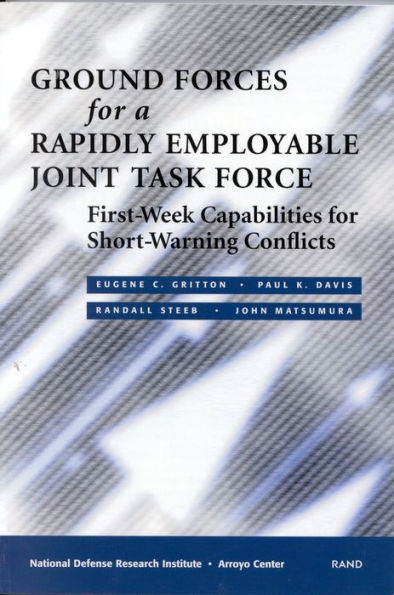Ground Forces for a Rapidly Employabel Joint Task Force: First-Week Capabilities for Short-Warning Conflicts
A key element of the Department of Defense's effort to transform the force is developing capabilities for rapidly employable joint task forces (JTFs). In many plausible military interventions, long-range precision fires alone wouldn't be sufficient and the JTFs would need ground-maneuver forces that could be employed within days of a decision to take action. A first, provisional version of such capability could be achieved in the near to mid term by using existing airlift and ship-based prepostioning and by zer-basing. This monograph recommends a three-component first-week ground force of Army and Marine units that would incorporate modern doctrinal concepts emphasizing agility, dispersal, networking, and precision fires.
"1139799680"
Ground Forces for a Rapidly Employabel Joint Task Force: First-Week Capabilities for Short-Warning Conflicts
A key element of the Department of Defense's effort to transform the force is developing capabilities for rapidly employable joint task forces (JTFs). In many plausible military interventions, long-range precision fires alone wouldn't be sufficient and the JTFs would need ground-maneuver forces that could be employed within days of a decision to take action. A first, provisional version of such capability could be achieved in the near to mid term by using existing airlift and ship-based prepostioning and by zer-basing. This monograph recommends a three-component first-week ground force of Army and Marine units that would incorporate modern doctrinal concepts emphasizing agility, dispersal, networking, and precision fires.
15.0
In Stock
5
1

Ground Forces for a Rapidly Employabel Joint Task Force: First-Week Capabilities for Short-Warning Conflicts
107
Ground Forces for a Rapidly Employabel Joint Task Force: First-Week Capabilities for Short-Warning Conflicts
107Paperback
$15.00
15.0
In Stock

Product Details
| ISBN-13: | 9780833027979 |
|---|---|
| Publisher: | RAND Corporation |
| Publication date: | 03/13/2000 |
| Pages: | 107 |
| Product dimensions: | 5.98(w) x 9.00(h) x 0.34(d) |
| Lexile: | 1550L (what's this?) |
From the B&N Reads Blog
